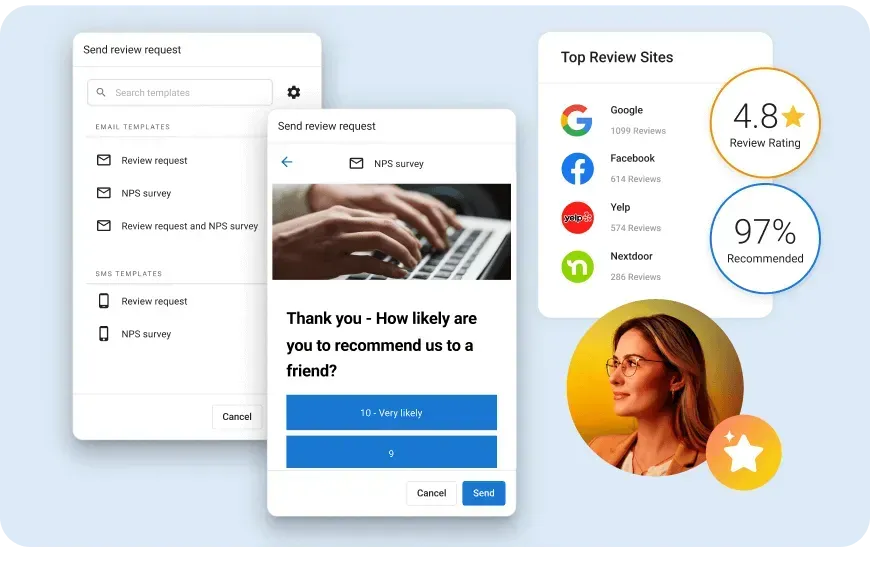OPTIMISING YOUR SEARCH BOX STRATEGIES FOR SUCCESS
Optimizing Your Search Box: Strategies for Success

Overview
Importance of optimizing search boxes
The importance of optimizing search boxes cannot be overstated. A well-optimized search box can greatly enhance the user experience and improve the overall performance of a website. When users have a seamless and efficient search experience, they are more likely to find what they are looking for and stay engaged with the site. Additionally, optimizing search boxes can also lead to increased conversions and revenue for businesses. By implementing strategies such as autocomplete suggestions, advanced filtering options, and intelligent search algorithms, websites can provide users with relevant and accurate search results. Overall, optimizing search boxes is crucial for ensuring user satisfaction and driving success in the online space.
Benefits of a well-designed search box
A well-designed search box offers numerous benefits to users. Firstly, it enhances the user experience by providing a quick and efficient way to find desired information. With a well-designed search box, users can easily search for specific products, articles, or any other content on a website, saving them time and effort. Additionally, a well-designed search box improves website navigation and usability, as it allows users to easily explore different sections and pages. Moreover, it helps users to refine their search queries and filter results, leading to more accurate and relevant search results. Overall, a well-designed search box is essential for improving user satisfaction and increasing the overall effectiveness of a website's search functionality.
Common challenges in search box optimization
One of the common challenges in search box optimization is ensuring that the search results are relevant and accurate. Oftentimes, users may enter vague or misspelled queries, which can lead to irrelevant or no results. To address this challenge, it is important to implement features such as auto-suggestions and spell-checking to assist users in refining their search queries. Another challenge is optimizing the search algorithm to prioritize the most relevant results based on user intent. This can be achieved by analyzing user behavior and feedback to continuously improve the search algorithm. Additionally, the design and placement of the search box itself can impact its usability. It is crucial to make the search box easily visible and accessible, preferably at the top of the page, to ensure that users can quickly find and use it. By addressing these common challenges, businesses can enhance the search experience for their users and improve overall user satisfaction.
Understanding User Behavior
Analyzing search queries
Analyzing search queries is a crucial step in optimizing your search box for success. By understanding the patterns and trends in user queries, you can gain valuable insights into what your audience is looking for and tailor your search functionality accordingly. This analysis allows you to identify common search terms, refine your search algorithms, and improve the overall search experience for your users. By continuously analyzing search queries, you can stay ahead of the curve and ensure that your search box is always optimized for maximum effectiveness.
Identifying user intent
User intent refers to the reason or motivation behind a user's search query. Identifying user intent is crucial for optimizing a search box as it allows you to tailor the search experience to meet the specific needs and expectations of your users. By understanding what users are looking for when they use your search box, you can provide more relevant and accurate search results, improving the overall user experience. This can be achieved through various techniques such as analyzing search queries, monitoring user behavior, and conducting user research. By effectively identifying user intent, you can ensure that your search box delivers the most valuable and satisfying results to your users.
Evaluating search patterns
When evaluating search patterns, it is important to consider the effectiveness of the h1 tag. The h1 tag is a crucial element in optimizing your search box for success. By using relevant keywords in the h1 tag, you can improve the visibility and relevance of your search results. For example, if your website is about gardening tips, using the keyword 'gardening' in the h1 tag can help search engines understand the content of your page and rank it higher in relevant search queries. Additionally, incorporating short highlights that can be turned into hyperlink text within the h1 tag can further enhance the user experience by providing quick access to related information. By evaluating and optimizing the h1 tag in your search box, you can effectively enhance the search patterns and improve the overall success of your website's search functionality.
Designing an Intuitive Search Interface
Placement and visibility
The placement and visibility of your search box are crucial factors in optimizing its effectiveness. It is important to strategically position the search box in a prominent location on your website, where it is easily accessible and visible to users. Placing the search box in the header or navigation bar is a common practice, as it ensures that it is readily available on every page. Additionally, using a magnifying glass icon or a clearly labeled search button can further enhance the visibility of the search box. By making the search box easily noticeable, you can encourage users to utilize it and improve their overall search experience on your website.
Autocomplete and suggestions
Autocomplete and suggestions are powerful features that can greatly enhance the user experience of a search box. By providing real-time suggestions as users type, autocomplete can help users find what they are looking for more quickly and efficiently. Additionally, suggestions based on previous searches or popular queries can assist users in discovering new and relevant content. Implementing autocomplete and suggestions requires careful consideration of factors such as relevance, performance, and user privacy. By optimizing these features, businesses can improve search box usability and ultimately drive user engagement and satisfaction.
Filtering and sorting options
Filtering and sorting options play a crucial role in optimizing the search box. These options allow users to refine their search results and find the most relevant information quickly and efficiently. By providing filters based on different criteria such as date, category, or price range, users can narrow down their search and focus on specific items of interest. Sorting options, on the other hand, enable users to arrange the search results based on their preferences, such as relevance, popularity, or price. By incorporating effective filtering and sorting options, businesses can enhance the user experience and increase the chances of users finding what they are looking for, leading to higher customer satisfaction and improved conversion rates.
Implementing Advanced Search Features
Faceted search
Faceted search is a powerful technique that allows users to refine their search results by applying filters or categories. By providing a set of predefined facets, such as price range, brand, color, and size, users can easily narrow down their search and find the most relevant results. This not only improves the user experience but also increases the chances of conversion, as users are more likely to find what they are looking for. Implementing faceted search requires careful consideration of the underlying data structure and user interface design, but the benefits it offers make it an essential feature for any search box optimization strategy.
Boolean operators
Boolean operators are an essential tool for optimizing your search box. By using boolean operators such as AND, OR, and NOT, you can refine your search queries and retrieve more accurate and relevant results. AND allows you to search for documents that contain all of the specified terms, while OR allows you to search for documents that contain any of the specified terms. NOT allows you to exclude certain terms from your search. By understanding and utilizing boolean operators effectively, you can enhance the search experience for your users and improve the overall success of your search box.
Wildcard and fuzzy search
Wildcard and fuzzy search are powerful techniques that can enhance the search experience for users. Wildcard search allows users to search for words that match a specific pattern, using special characters such as asterisks or question marks. This can be useful when users are unsure of the exact spelling or want to find variations of a word. Fuzzy search, on the other hand, takes into account spelling mistakes or typos and returns results that are similar to the search query. By incorporating wildcard and fuzzy search functionality into your search box, you can provide users with more accurate and comprehensive search results, improving the overall user experience.
Optimizing Search Results
Relevance ranking
Relevance ranking is a crucial aspect of optimizing your search box for success. It determines the order in which search results are displayed, ensuring that the most relevant and useful content is presented to users first. By implementing effective relevance ranking strategies, you can improve the overall search experience and increase user satisfaction. There are various techniques and algorithms that can be used for relevance ranking, such as keyword matching, semantic analysis, and machine learning. It is important to continuously monitor and refine your relevance ranking strategies to ensure that they align with the evolving needs and preferences of your users.
Personalization
Personalization is a key strategy for optimizing your search box. By tailoring the search experience to each individual user, you can increase engagement and satisfaction. Personalization can be achieved through various techniques, such as analyzing user behavior, utilizing machine learning algorithms, and implementing recommendation systems. By understanding the preferences and interests of your users, you can deliver more relevant search results and improve the overall user experience. Implementing personalization in your search box can lead to higher conversion rates and increased customer loyalty.
Highlighting and snippet generation
Highlighting and snippet generation is a crucial aspect of optimizing your search box. By effectively highlighting the relevant keywords in search results, you can attract the attention of your users and provide them with quick insights into the content. Snippet generation plays a key role in showcasing the most relevant parts of the search results, giving users a preview of what they can expect. By implementing effective strategies for highlighting and snippet generation, you can enhance the user experience and improve the overall success of your search box.
Monitoring and Analyzing Search Performance
Tracking search metrics
Tracking search metrics is an essential part of optimizing your search box. By monitoring key metrics such as search volume, click-through rate, and conversion rate, you can gain valuable insights into how users are interacting with your search functionality. This data allows you to identify any issues or areas for improvement, enabling you to make data-driven decisions to enhance the user experience and drive better search results. Additionally, tracking search metrics enables you to measure the effectiveness of any changes or optimizations you make to your search box, helping you determine the impact of your efforts and refine your strategies for even greater success.
User feedback and testing
User feedback and testing are crucial components of optimizing your search box. By gathering feedback from users, you can identify areas for improvement and make adjustments to enhance the user experience. Conducting testing allows you to evaluate the effectiveness of different strategies and determine which ones yield the best results. By incorporating user feedback and conducting regular testing, you can ensure that your search box is constantly evolving and meeting the needs of your users.
Continuous improvement
Continuous improvement is a crucial aspect of optimizing your search box. By constantly analyzing user behavior and feedback, you can identify areas for enhancement and implement changes to enhance the search experience. This iterative process allows you to fine-tune your search box, making it more intuitive, efficient, and accurate over time. Continuous improvement also involves staying up-to-date with the latest trends and technologies in search functionality, ensuring that your search box remains competitive and meets the evolving needs of your users.
Conclusion
Key takeaways
The key takeaways from this article on optimizing your search box are as follows: Firstly, it is important to ensure that the search box is prominently displayed and easily accessible on your website. Secondly, implementing autocomplete functionality can greatly enhance the user experience by providing suggestions and saving time. Thirdly, optimizing the search algorithm to deliver accurate and relevant results is crucial for customer satisfaction. Lastly, regularly analyzing and monitoring user search behavior can provide valuable insights for further improvements. By implementing these strategies, you can improve the effectiveness of your search box and enhance the overall user experience on your website.
Future trends in search box optimization
The future of search box optimization holds promising trends that can greatly enhance user experience and improve search functionality. One of the key trends is the integration of artificial intelligence and machine learning algorithms into search box algorithms, enabling more accurate and relevant search results. Additionally, voice search is expected to play a major role in the future of search box optimization, as more users rely on voice assistants like Siri and Alexa to perform their searches. Another trend is the optimization of search boxes for mobile devices, as the majority of internet users now access the web through their smartphones. This includes implementing responsive design and ensuring that search boxes are easily accessible and user-friendly on smaller screens. Overall, the future of search box optimization is exciting and filled with opportunities to enhance the search experience for users.
Importance of ongoing optimization efforts
Ongoing optimization efforts are crucial for the success of a search box. As user expectations and search behavior evolve over time, it is important to continuously improve and refine the search experience. By regularly analyzing user feedback, monitoring search analytics, and implementing updates, businesses can ensure that their search box remains effective and user-friendly. Ongoing optimization efforts also allow for the identification and resolution of any issues or limitations in the search functionality, resulting in a more accurate and relevant search results. Additionally, ongoing optimization efforts can help businesses stay ahead of their competitors by providing a superior search experience that meets the ever-changing needs of users.


























